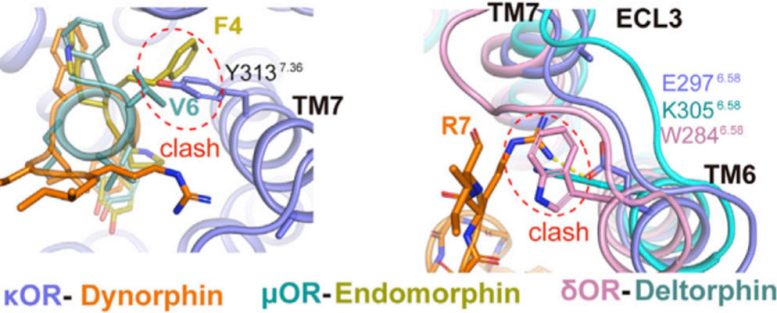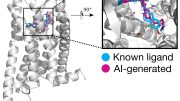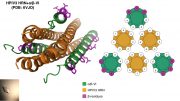
Opioids are a class of drugs that are used to relieve pain and provide a sense of relaxation and well-being. They work by interacting with opioid receptors in the brain and throughout the body. While opioids can be effective in managing severe pain, they also carry a high risk of addiction and overdose, making them a controversial and heavily regulated class of drugs.
A group of scientists collaborated to release comprehensive structures of the entire human opioid receptor family, with the aim of facilitating the development of more precise pain medications.
In an ongoing endeavor to enhance opioid pain medications, scientists from the United States and China utilized cryoEM technology to determine the comprehensive structures of the entire family of opioid receptors when bound to their natural peptides. Further structure-informed biochemical studies were conducted to gain a deeper comprehension of the peptide-receptor selectivity and drug signaling mechanisms.
The findings, published in the journal Cell, offer a comprehensive structural framework that should assist drug developers in creating safer drugs for the alleviation of severe pain.
This work was spearheaded by the lab of Eric Xu, Ph.D., at the CAS Key Lab of Receptor Research in China, in collaboration with the lab of Bryan L. Roth, MD, Ph.D., at the UNC School of Medicine, where graduate student Jeff DiBerto led the pharmacological experiments to understand the receptors’ signaling mechanisms.
Opioid drugs relieve pain by mimicking a naturally occurring pain-relief function within our nervous symptoms. They are the best, strongest pain relievers we have. Unfortunately, they come with side effects, some severe such as numbness, addiction, and respiratory depression, leading to overdose deaths.

Alignment of peptide-bound opioid receptors reveals structural features, such as steric effects, that contribute to the subtype-selective binding and functional outcomes observed in biochemical assays. Credit: Roth Lab, UNC School of Medicine
Scientists have been trying for many years to overcome the side-effect problem in various ways, all involving one or more of four opioid receptors to no avail. One way scientists continue to explore is the creation of peptide or peptide-inspired small molecule drugs.
Peptides are short chains of amino acids; think of them as short proteins. Certain naturally occurring, or endogenous, peptides bind to opioid receptors on the surface of cells to create an analgesic effect, also known as pain relief. Think of an analgesic like an anesthetic, except that analgesics do not “turn off” the nerves to numb the body or alter consciousness. So, the idea is to create a peptide drug that has a strong analgesic effect, without numbing nerves or altering consciousness, or causing digestive, respiratory, or addiction issues.
“The problem in the field is we’ve lacked the molecular understanding of the interplay between opioid peptides and their receptors,” said Roth, co-senior author and the Michael Hooker Distinguished Professor of Pharmacology. “We’ve needed this understanding in order to try to rationally design potent and safe peptide or peptide-inspired drugs.”
Using cryogenic electron microscopy, or cryoEM, and a battery of biomechanistic experiments in cells, the Xu and Roth labs systematically solved the detailed structures of endogenous peptides bound to all four opioid receptors. These structures revealed details and insights into how specific naturally occurring opioid peptides selectively recognize and activate opioid receptors. The researchers also used exogenous peptides, or drug-like compounds, in some of their experiments to learn how they activate the receptors.
The cryoEM structures of agonist-bound receptors in complex with their G protein effectors (called their “active state”) represent what these receptors look like when they are signaling in cells, giving a detailed view of peptide-receptor interactions. The Roth lab used the structures solved by the Xu lab to guide the design of mutant receptors and then tested these receptors in biochemical assays in cells to determine how they alter receptor signaling. Understanding these interactions can then be used to design drugs that are selective for opioid receptor subtypes, as well as to produce certain signaling outcomes that may be more beneficial than those of conventional opioids.
“This collaboration revealed conserved, or shared, mechanisms of activation and recognition of all four opioid receptors, as well as differences in peptide recognition that can be exploited for creating subtype-selective drugs,” said DiBerto, first author and Ph.D. candidate in the Roth lab. “We provide more needed information to keep pushing the field forward, to answer basic science questions we hadn’t been able to answer before now.”
Previous research showed the structure of opioid receptors in their inactive or active-like states, with active state structures only existing for the mu-opioid receptor subtype, the primary target of drugs like fentanyl and morphine. In the Cell paper, the authors show agonist-bound receptors in complex with their G protein effectors, made possible through cryoEM technology that did not exist when currently used medications were being developed.
Drugs such as oxycontin, oxycodone, and morphine cause various effects inside cells and throughout the nervous symptom, including pain relief. But they have effects in the digestive and respiratory systems, too, and interact with cells to lead to addiction. Fentanyl, meanwhile, is another powerful pain reliever, but it binds to opioid receptors in such a way as to cause severe side effects, including the shutdown of the respiratory system.
The thrust behind such research led by Xu and Roth is to home in on the mechanistic reasons for pain relief potency without triggering the cellular mechanisms that lead to severe side effects and overdosing.
“We are attempting to build a better kind of opioid,” Roth says, “We’re never going to get there without these kind of basic molecular insights, wherein we can see why pain is relieved and why side effects occur.”
Reference: “Structures of the entire human opioid receptor family” by Yue Wang, Youwen Zhuang, Jeffrey F. DiBerto, X. Edward Zhou, Gavin P. Schmitz, Qingning Yuan, Manish K. Jain, Weiyi Liu, Karsten Melcher, Yi Jiang, Bryan L. Roth and H. Eric Xu, 12 January 2023, Cell.
DOI: 10.1016/j.cell.2022.12.026









What could POSSIBLY go wrong?
What’s the point of a new opioid the CDC isn’t going to let the Dr’s prescribe it, the people who need it won’t get it. As of now you get out of a surgical procedure like knee surgery due to a complex tear of the meniscus and a torn ligament which I had only a couple years ago or a ulnar nerve transposition they tell you to take Tylenol.
Are you promoting Suboxone.
What is the use in developing a new pain Ned, the doctors won’t prescribed it to the people who really need it. That’s why another of people who are in severe pain go yo the streets to get pain meds and that’s why another of times they don’t really know what they are buying and they end up with somthing that will really hurt them. Doctors should stop being afraid and prescribe pain meds to people who truly need it. I’m not saying oxytocin but Lortab or somthing else. People are truly suffering and there is no excuse for it
Are we really going to swallow this new pill from a Chinese lab?